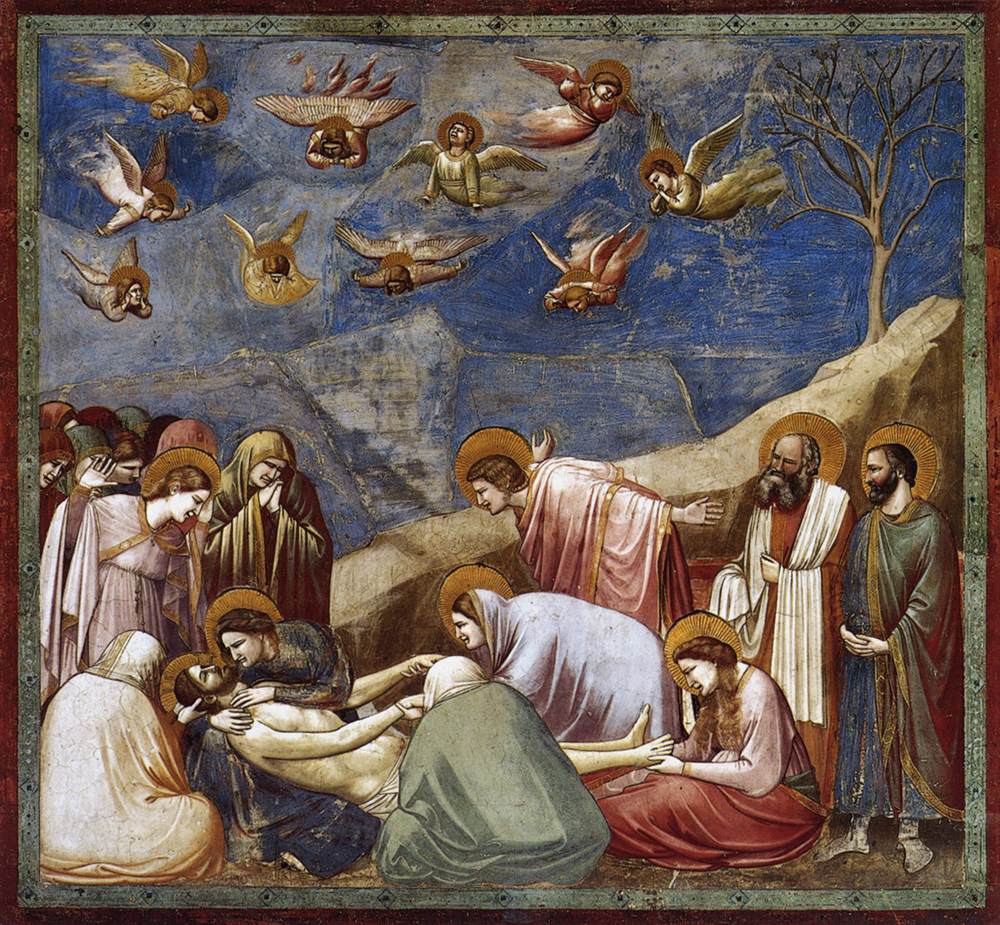Ambrogiotto di Bondone (1266 – 1336), known to all as Giotto, is perhaps the single most influential figure in art. He was the light that emerged from the Middle Ages. He was the single man to bring painting from dark and dingy corners hidden in the medieval times, into the lofty spaces of churches and noble walls. Giotto was of the Florentine school of art.
Giotto was a religious painter, and was the first to connect dramatic stories with living people. He was also the first to give movement to figures, the first to make the sacred matter of art incontrovertibly real and true, believing in the miracle of life and through observing the effect of the miracle of his fellow men.
The majority of Giotto’s work was done in frescoes: watercolor on wet plaster on a wall or ceiling, so that the colors penetrate the plaster and become fixed. Because of the solidity of this method, his paintings till exist today though some undoubtedly have flaked off.
Lamentation is located inside of The Arena Chapel. A rectangular shaped box with Gothic windows on one side, and a barrel vault shaped ceiling. There is speculation that Giotto had directed it’s building, for the wall surfaces make an unhindered canvas for his works. Giotto divided the walls into even squares, depicting 36 scenes of the life of Christ. Lamentation is scene 20. It is said it took him a total of 4 years to complete all the paintings.
Giotto’s revolutionary technique is probably most recognized in how he animated figures. What was once always flat perspectives suddenly, with Giotto’s invention, became animated and 3D. Clothing upon the subjects had volume and wrinkles and rolled off shoulders in folds.
In Lamentation, or The Deposition, there is no background or landscape. The scene takes place in a rocky space of land, where men and women surround Christ, lamenting – note emotionally – the loss of his life. Every line of the painting, every gesture of the painting directs the viewers eyes towards Christ resting on the knees of the Virgin. Mary Magdalen holds his feet, St. John leans forwards, Joseph stands behind Magdalen, and grief-stricken angels float above.


